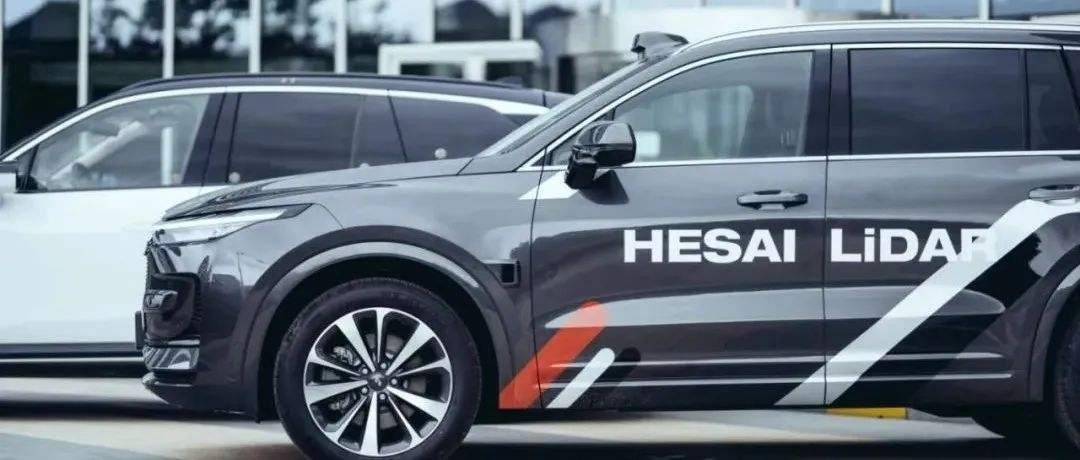Author: Tian Xi
The 2022 market for LiDAR technology is booming.
Following the delivery or launch of new car models with long-range LiDAR technology such as the Polestar 2, Huawei Hi version, NIO ET7, Xpeng P5, and more, resulting in record shipments, short-range LiDAR technology for blind spot detection has recently appeared at related manufacturer release events.
On November 2nd, Hesai Technology released FT120, its short-range LiDAR technology designed for mass production in ADAS.
Unlike its flagship AT128, FT120 is the first pure solid-state LiDAR technology from Hesai, with laser emission and reception completed through a chip, and it has a larger vertical field of view, which can accurately perceive low-lying objects near the vehicle.
It is worth mentioning that FT120 does not originate from traditional flash technology solutions that can only emit in one direction, but can adjust both the emission time and direction. According to Hesai CEO Li Yifan, it can be described as a “** high-end flash **”, which is superior to traditional flash technology and the only technology of its kind on the market.
It is reported that this product has secured contracts for mass production from multiple automobile manufacturers for more than ** one million units **, with production and delivery expected to begin in the second half of 2023.
More Powerful Than Flash, Hesai’s Blind Spot Detection Technology Secures One Million Units for Mass Production
The function of semi-solid-state lidar loaded in current mass-produced cars is mainly used for long-distance measurement to identify the traffic conditions ahead of the road, and there is no coverage for perception on both sides, which leads to blind spots when there are situations such as lane changes, ghost probes or low-height objects like cats and dogs passing by, resulting in safety accidents.
At the press conference, Li Yifan demonstrated the functional definition of Hesai’s blind-spot lidar in one item by one item of hardcore parameters–not only to see nearby but also to see clearly–comprising a field of view of 100° x 75°, a range of 30 meters at 10%, a point frequency of 192,000 points/second (in single-echo mode), and a global resolution of 160 (H) x 120 (V).
Li Yifan said that with the application of high-level assisted driving on urban roads, this problem needs to be urgently solved. “When using automatic parking, I also worry that there will be scraping in the dimly lit garage.”
FT120 has emerged with advantages of ultra-wide-angle field of view and zero blind spots, with a maximum range of 100 meters, which can perceive not only high signs, railings, and layered garages, but also low-height children, pets, cones, and zebra crossings.
Moreover, FT120 can detect rich details of objects, helping intelligent vehicles to grasp real-time environmental information in scenarios such as turning at intersections, vehicle cutoff, active overtaking, and automatic parking to avoid dangerous situations.
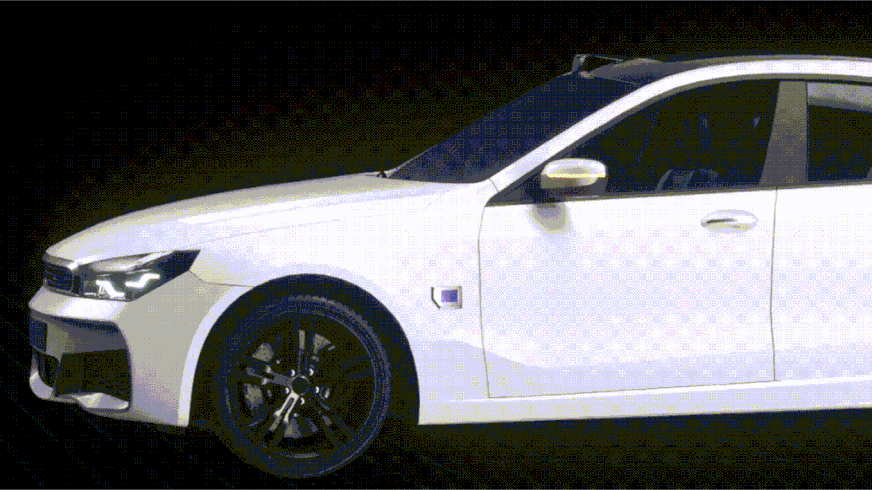

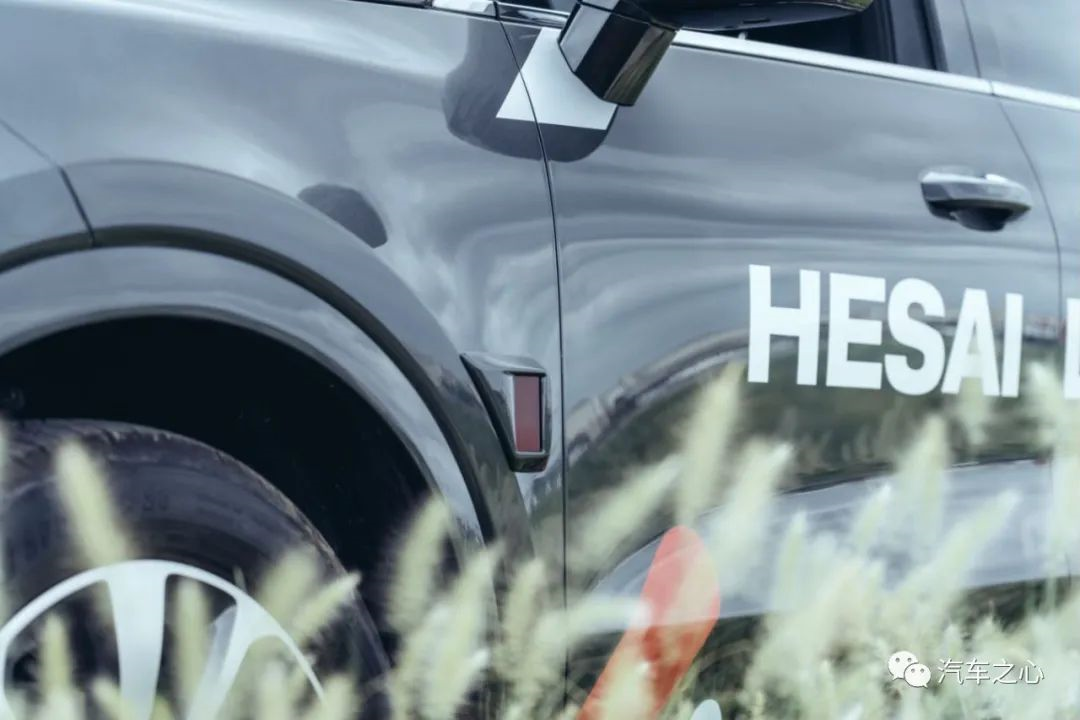
Based on a highly integrated architecture, FT120 boasts outstanding performance while being compact in size, seamlessly integrating into the sides or all around the body of a vehicle. It can be flexibly installed on both sides of the fenders, air grille, rear bumper, and other positions according to actual needs, with a minimum exposed window size of only 70 mm x 50 mm (horizontal or vertical placement can be defined by the automaker), balancing functionality and aesthetics.
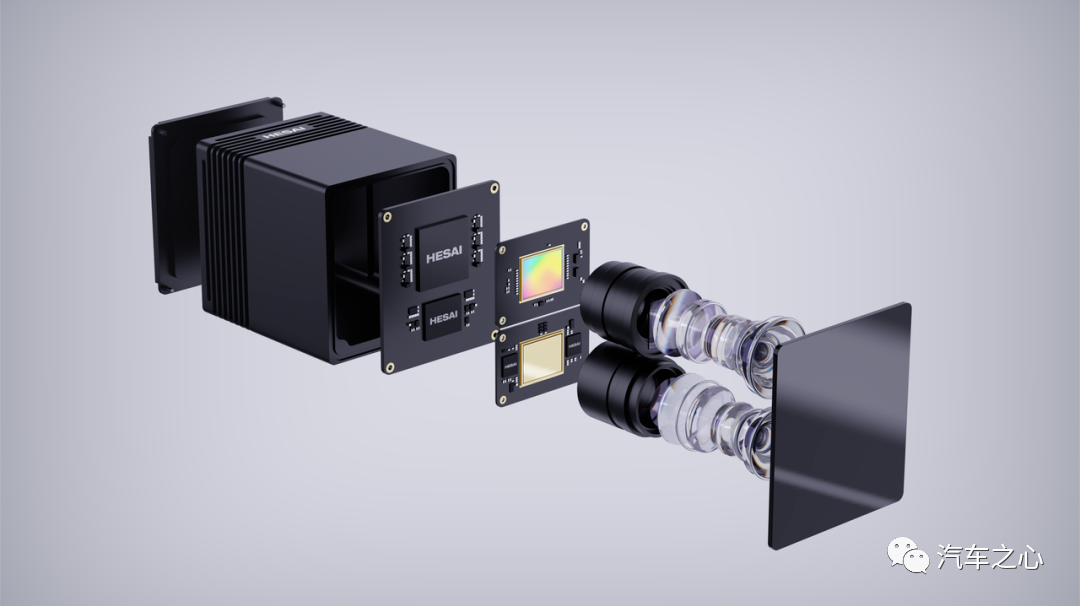
“What’s really interesting about this product is that it’s purely solid-state,” said Li Yifan. FT120 has no moving parts inside, making it more reliable and able to measure distances more accurately.
In addition, compared to the solid-state Flash solutions, Hesai can achieve better control. “Flash can only emit light in all directions at the same time, which actually deducts points, while we can control the emission at different directions and time points, which is harder to achieve.”

More noteworthy is that, thanks to years of research and development of Hesai’s purely solid-state electronic scanning technology (E-Scanning), FT120 integrates a “matrix” composed of tens of thousands of laser receiving channels on a single chip, which is a further step above the “line array” of 128 laser receiving channels of AT128, with a difficulty comparable to “embroidering flowers” on strands of hair.However, from the perspective of car body, “blind spot detection” with laser radar is currently not a “mainstream route”. Instead, more models obtain the ability of 360-degree environmental perception through installing surround-view cameras.
Moreover, in terms of cost, cameras have advantages. Even Li Yifan admitted that, compared with that, FT120 is still more expensive.
At first glance, using laser radar seems mediocre, but in fact it has features that cameras currently cannot reach:
Higher safety redundancy. The perception of the camera mainly relies on deep learning. Only when the objects encountered match the database, can they be recognized. However, there are many “odd-shaped objects” in real life, and various corner cases cannot be exhausted.
Although some tech companies have tried to find another solution, such as Tesla’s mention at AI Day this year that “network occupation” technology can achieve “only identifying whether it is an obstacle, without identifying what the obstacle is”, this solution requires extremely high algorithm requirements, and from the latest FSD Beta version pushed by Tesla, it has not reached enough maturity, and cannot achieve enough safety.
In contrast, laser radar is the opposite, “this system is too safe”, Li Yifan said frankly. As for cost, laser radar has dropped from several tens of thousands of yuan a few years ago to several thousand yuan, and there is still room for further decline in the future.
The OEMs have already “voted with their feet” and made their choice. As mentioned earlier, FT120 has already secured over a million units for mass production. “Now, everyone is vying to develop NoA. In such complex driving scenarios, blind spot laser radar must be used, because no one dares to cut costs on safety.” A person in the industry commented.
Hesai’s Law: “Started a big evening, but can always catch up with the morning set.”
In terms of time, FT120 is not the first blind spot detection laser radar launched in the industry. Several months ago, some manufacturers have already launched related products.
At the press conference, someone raised doubts about Hesai’s performance, which seemed to lag behind its peers. Previously, Hesai’s Pandar128 used in autonomous driving vehicles was launched 2-3 years later than its overseas competitors. The AT128, used for the ADAS market, was not released until August 2021.
To this, Li Yifan explained that Hesai officially announced new products following two principles:
First, the product to be released has formed the final architecture of point cloud; second, it can be mass-produced within a year.
It is reported that before the introduction of Pandar128, Hesai spent three months developing a 160-line LiDAR for a German automotive group. By right, the latter should have been more popular, but due to its insufficient maturity and reliability at that time, it was not launched into the market.
Instead, the slightly late and repeatedly verified Pandar128 was a great success, with outstanding performance in various performance indicators such as long-range measurement, short-range measurement, resolution, anti-interference, safety, stability, etc., and became Hesai’s flagship product of that generation.
The same story happened with the AT128. Although it was not the first semi-solid-state product to enter the market, it once launched it received ideal points for multiple car models under brands such as Jiedu, Gaohu, Lutes, and others, and achieved mass production in less than a year. After experiencing a capacity ramp-up, it finally achieved a single-month delivery volume breakthrough of over 10,000 units in September 2022, and broke through 10,000 units again in October, setting an industry record, and also opening the prologue of large-scale production and delivery of vehicle-mounted LiDARs worldwide.
In a sense, Hesai is always moving forward in its own pace. Since choosing the technology route of the first product in 2016, it has “shown its initial shape.”
 At that time, the concept of “solid-state LiDAR” was popular, and many people in the industry and investment circles shouted, “no solid-state, no LiDAR”. However, in the eyes of Hesai, this technology was far from reaching a mature stage, and typical components had not yet become vehicle-standardized, with no performance and cost advantage.
At that time, the concept of “solid-state LiDAR” was popular, and many people in the industry and investment circles shouted, “no solid-state, no LiDAR”. However, in the eyes of Hesai, this technology was far from reaching a mature stage, and typical components had not yet become vehicle-standardized, with no performance and cost advantage.
Li Yifan believed that if they chose to make solid-state LiDAR, they would only be able to stay at the stage of making small batches of demo prototypes and would not be able to achieve mass production. “Without customer orders and sufficient feedback, how can we iterate and polish the product?”
In the end, despite all kinds of pessimism, Hesai still chose to go the route of “mechanical rotation”. Later, L4 companies such as Waymo all chose rotating LiDAR as their main LiDAR, and during that time, solid-state LiDAR did not become mainstream.
Today, according to the LiDAR report by Yole Group, in 2021, Hesai has a 58% market share, ranking first in the global autonomous driving LiDAR field.
With the opening of the ADAS market in the past two years, Hesai has also made efforts in this field.
In fact, from mechanical to mixed solid-state, and then to pure solid-state solutions, it is only a difference in scanning solutions. The essence of it is no different. This has allowed Hesai to continue its technological inheritance and experience accumulation, and has made a rapid breakthrough in the field of advanced driver assistance.
Similarly, according to data from Yole Group in 2021, Hesai ranked first in the number of pre-installed production ADAS fixed points. “Hesai started late, but caught up early.” A laser radar insider of a certain domestic company couldn’t help but exclaim.
Today, with the release of the pure solid-state short-range LiDAR FT120, coupled with the previous long-range semi-solid-state LiDAR AT128, Hesai has formed a complete vehicle-grade LiDAR solution.
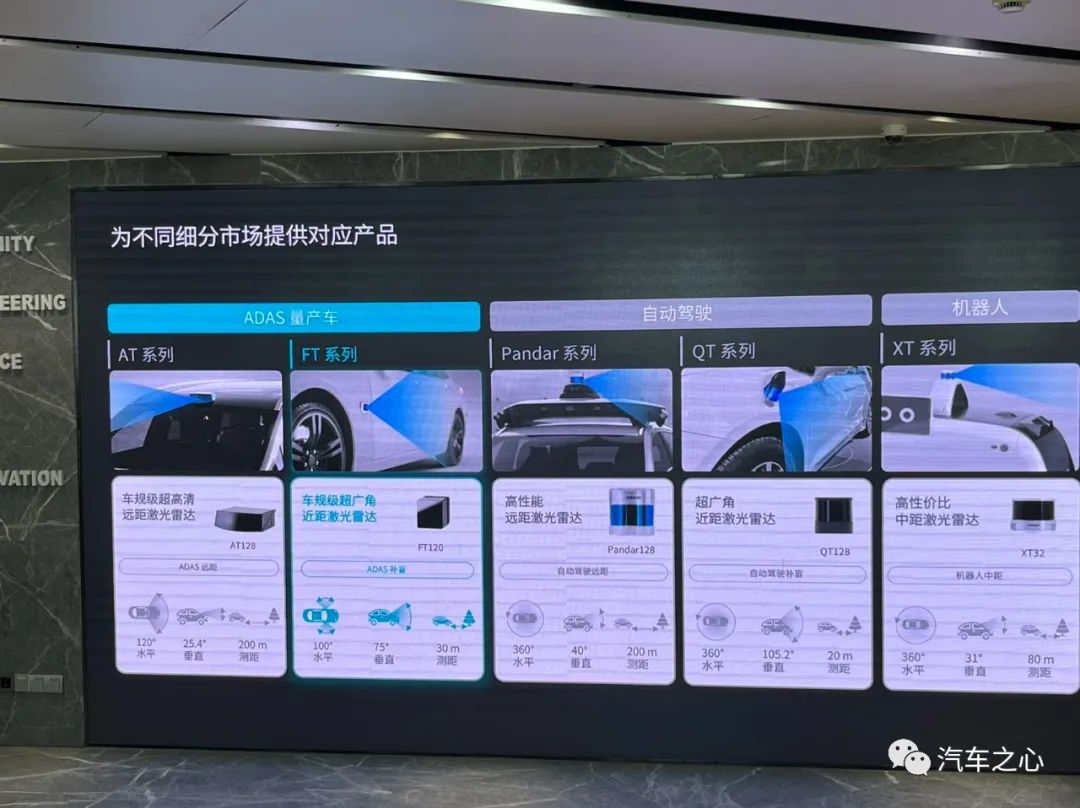 ## Migration to Chipization from Moore’s Law, which reduce the cost of single-line by about 10 times for Hesai
## Migration to Chipization from Moore’s Law, which reduce the cost of single-line by about 10 times for Hesai
According to Li Yifan, Hesai has done two things right: chipization and self-built factories.
Traditional lidars adopt a separate architecture, with two circuit boards and several chips/components needed for each transmitting and receiving channel, and each of them must undergo precision adjustment, which means that not only its size is large and material cost is high, but also its product consistency is more difficult to guarantee. The probability of system failure caused by a single component failure increases greatly if there are hundreds of transmitting and receiving channels for lidars.
Hesai’s solution is to develop dedicated lidar chips, which integrate hundreds of transmitting and receiving channels onto a few chips responsible for sending and receiving, reducing the number of components from 1000 to 100.
At the same time, the supply chain is greatly simplified, with key suppliers reduced from about 100 to about 10.
In addition, in assembly, it no longer requires a lot of manual debugging and can be completed through automation, which saves procedures and time, and greatly reduces quality errors.
More importantly, using chipization technology can exponentially reduce costs, not only material costs and debugging costs, but also chip costs.
This is thanks to the mature methodology of the semiconductor industry — Moore’s Law, which reduces the cost of unit performance by half every 18-24 months.
Li Yifan gives an example of the pixel of a mobile phone camera. In the past ten years, under the premise that the overall cost remains basically unchanged, the pixel of the mobile phone camera has increased from one million to one hundred million, which means that the average cost of each pixel has decreased to 1/100 of the original cost.
Similarly, chipization can also allow lidars to achieve higher point frequency with no significant cost increase. For example, the cost of a 128-line lidar can produce a 256-line lidar.
Specifically for Hesai, the cost of its single line can be reduced by about 10 times. In terms of performance, by 2026, the next generation of FMCW lidars will improve the resolution by another 10 times compared to the just-released FT120.
In addition to innovation in chip miniaturization, Hesai has also laid out in-house manufacturing with its own factories. “The company established this strategy from the beginning, treating manufacturing as part of research and development,” said Hesai co-founder and CTO, Shaoqing Xiang.
This approach originated from when Hesai had only around 20 employees and assembled its products independently. As the participators in the emerging LIDAR industry lacked experience in large-scale manufacturing of such products and to maintain a technological lead, it was necessary to explore step-by-step on their own. In addition, rapid technological iterations and quality control were also crucial factors. Tesla’s entry into die casting and vehicle body integration serves as a typical example.
“You must first understand it yourself before you can share your experience with the outside world. If outsourcing can help you, it means you have fallen behind,” added Li Yifan.
It is learned that Hesai controls each production process from the source in its factory, optimizing and improving production processes in a timely manner to ensure mass production and high-quality delivery of LIDAR products that meet stringent OEM standards.
In Hesai’s organizational structure, the concept of combining manufacturing and research and development is also reflected, where pre-research from 0 to 1 is led by chief scientist Kai Sun, engineering from 1 to 9 is supervised by CTO Shaoqing Xiang, and production from 9 to 10 is within the purview of the factory director’s authority. “The factory director has more people under their management than I do.”
As Hesai’s LIDAR production continues to boom, manufacturing will be given even greater significance.
Hesai invested nearly $200 million to build the “Maxwell” Intelligent Manufacturing Center in Jiading, Shanghai. The center can undertake LIDAR research and development, production, and vehicle regulatory testing, and it introduces “automation + flexibility” production lines, meeting both large-scale production and diversified, customized needs.
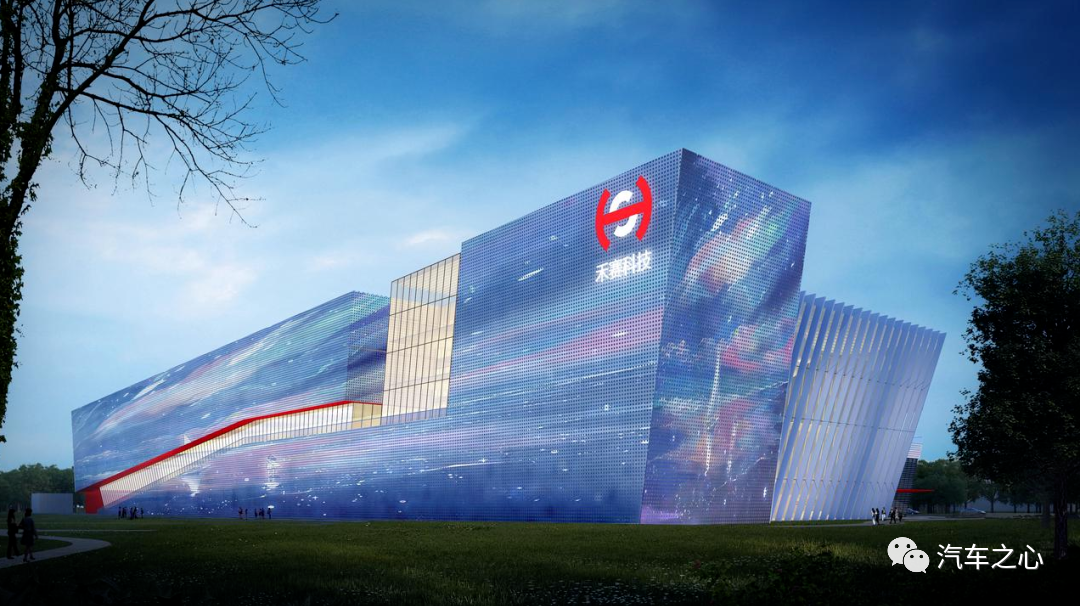 Li Yifan revealed that the annual production capacity of the factory will reach 1 million units, and it will be fully put into operation next year.
Li Yifan revealed that the annual production capacity of the factory will reach 1 million units, and it will be fully put into operation next year.
It can be seen that the filling blind spot LiDAR is becoming the battlefield for the new round of strength competition among manufacturers such as Hesai. Relevant participants are gearing up and working hard to get their products on board.
After Hesai released the FT120, several other companies continued to hold press conferences for new product releases for several days. It won’t be long before we see the extremely lively side of the whole market, from the comparison of different performance parameters to the layout of different strategies. This also indicates that autonomous driving in urban areas may spread on a large scale.
This article is a translation by ChatGPT of a Chinese report from 42HOW. If you have any questions about it, please email bd@42how.com.
